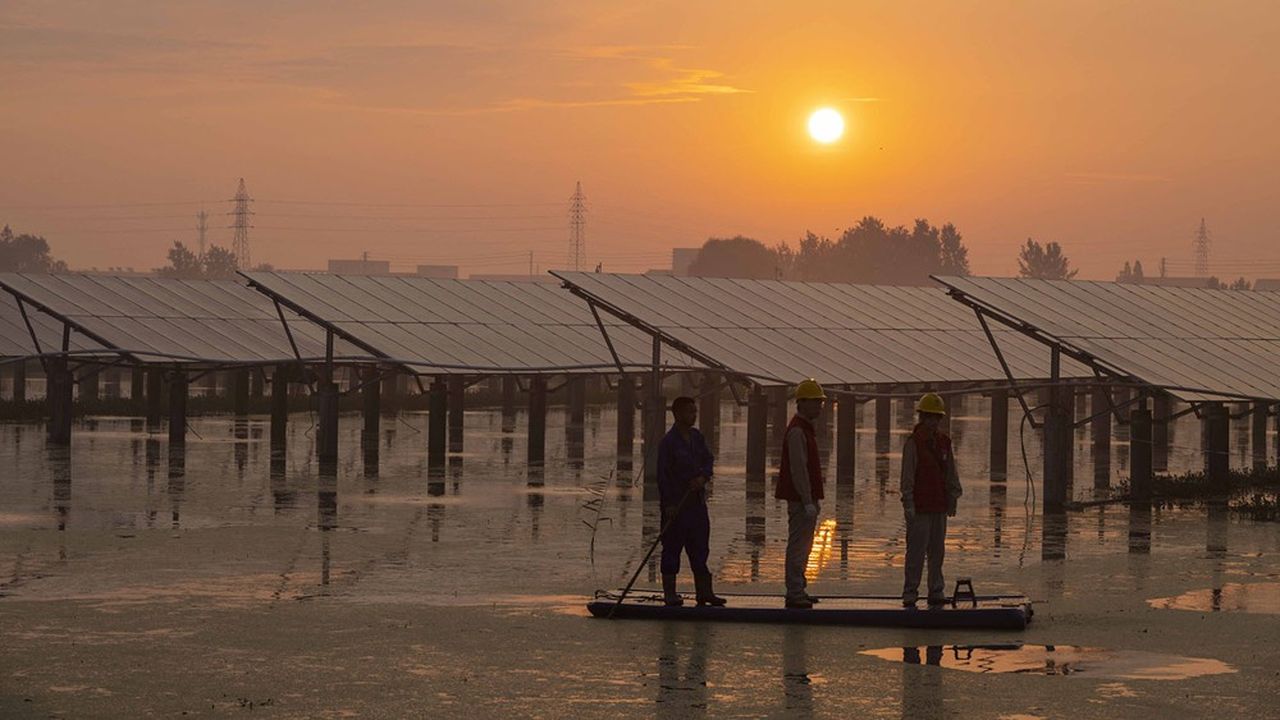
A new milestone has been reached in China’s race towards carbon neutrality. More than a quarter of the energy consumed now comes from clean sources, Beijing assured on Thursday.
Following the Paris climate agreement, the world’s largest emitter of greenhouse gases committed to stabilizing or decreasing its emissions by 2030, then achieving carbon neutrality by 2060. With the development of renewable capacity, the share of “clean energy” in China’s total energy consumption has increased from 15.5% to 26.4% over the last decade.
Race for renewables
At the same time, wind and solar capacity has increased tenfold, according to the white paper, the main points of which are published by the Xinhua news agency. The country thus reached its target for solar and wind electricity production last week, six years ahead of schedule. This result has been made possible by the construction of some of the largest infrastructures in the world.
For example, the Tengger Desert (Ningxia region in the north of the country) is home to a solar park, at one time the largest in the world, thanks to hundreds of rows of photovoltaic panels capable of producing 1.5 gigawatts (GW) of electricity. The new installations have twice the capacity.
China expanded its solar power generation capacity by more than 55 percent last year, according to the National Energy Administration. “China’s solar power is growing at an unprecedented scale and pace,” said Wu Di, an analyst at Peking University’s Institute of Energy, who estimates that the country is home to more than 40 percent of the world’s generating capacity.
The share of solar in China’s electricity production has been rising sharply since 2019.Chinese government
Challenges
China is currently building an additional 180 gigawatts of solar and 159 GW of wind, according to a study by the US-based Global Energy Monitor (GEM). That’s 64% of the world’s solar and wind currently under construction and nearly double the rest of the world combined. China is followed by the US (40 GW), Brazil (13 GW), the UK (10 GW) and Spain (9 GW), according to GEM, which tracks fossil fuel and renewable energy projects worldwide.
China still relies heavily on coal-fired power plants, a highly polluting fossil fuel, to meet rising electricity demand. It is also struggling to get some of its renewable energy, that produced in remote regions, to the densely populated economic centers of the east. This setback could slow Beijing’s energy transition, according to David Fishman of the Lantau Group.
Waste
The rapid development of solar power generation has not kept pace with the distribution network, leading to energy waste. The loss rate reached 4% in the first quarter and could increase further. “If it wants to keep (this rate) within a suitable range, China still has a long way to go,” warns analyst Wu Di. Especially since transporting energy from west to east is also “not the most cost-effective approach,” stresses Gao Yuhe of Greenpeace.
In addition to the giant solar farms in the north of the country, China also relies on distributed generation based on photovoltaic panels installed on the roofs of residential and commercial areas, which reduces transmission losses. But China’s solar panel industry is plagued by oversupply, causing prices to plummet and companies to go bankrupt.







